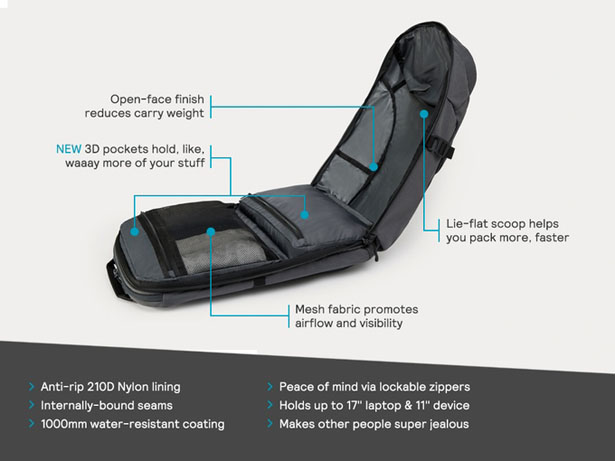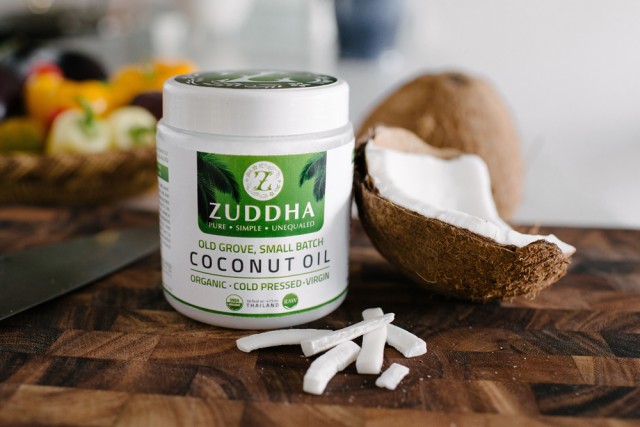Crowdfunding isn’t for everyone or every project.
And one of the simplest ways to fail in crowdfunding is launching a project that’s not a fit.
Yet there are so many different types of successful crowdfunding projects, from films to backpacks to drones to virtual-reality headsets.
So how do you know if your idea is right for crowdfunding?
This simple guide is designed to help you decide. It’s broken down into 5 parts:
- Understanding the different types of crowdfunding, and which is right for you
- Knowing the attributes of a good rewards-based crowdfunding project
- Learning the platform rules and guidelines
- Browsing and backing other projects
- Validating interest and demand
Let’s take each one, step-by-step:
1. Understanding the different types of crowdfunding, and which is right for you
There are five very different kinds of crowdfunding:
- Rewards-based crowdfunding: The first type of crowdfunding is rewards-based crowdfunding. It’s well named, because in rewards-based crowdfunding, backers contribute typically small amounts of money in exchange for some sort of reward. This reward is often, but not always, the item being produced, such as a watch, an album or a film.
- Donation-based crowdfunding: The second type of crowdfunding is donation-based crowdfunding. In donation-based crowdfunding, donors generally donate small amounts of money and often, there is no reward beyond the gratitude of the project creator and / or beneficiary (and possibly a tax deduction).
- Equity crowdfunding: The third type of crowdfunding is equity crowdfunding. In equity-crowdfunding, investors give larger amounts of money in exchange for a small piece of equity in the company itself.
- Debt crowdfunding: The fourth type of crowdfunding is debt crowdfunding. While lesser known, debt crowdfunding still makes up a large piece of the global crowdfunding industry. Unlike other forms of crowdfunding, debt crowdfunding is not an exchange for a reward or equity. The investors don’t get a reward and they don’t get a piece of equity in the company. Instead they make a loan with the expectation to get paid back the principal plus interest.
- Recurring crowdfunding: The last type of crowdfunding is recurring crowdfunding. Like debt crowdfunding, recurring crowdfunding is lesser known, but it’s perfect for certain kinds of creators. In recurring crowdfunding, patrons contribute a recurring amount of money, either on a specific time period (like every month) or every time the creator makes something new (a new song, a new album, a new video, etc.).
Giving rewards, like a watch, an album or a film, is very different than giving away equity in your company. Decide which type of crowdfunding you even want to consider for your idea.
(For the rest of this guide, I’m going to focus on rewards-based crowdfunding, using platforms like Kickstarter and Indiegogo.)
2. Knowing the attributes of a good rewards-based crowdfunding project
Good rewards-based crowdfunding projects are (almost always) a creative project, with a beginning and an end, in which something new gets made and shared with a tribe of people that you can identify and communicate with before you launch.
That’s a mouthful, so let’s break it down piece by piece:
Good rewards-based crowdfunding projects are almost always…
a creative project…
The definition of ‘creative project’ is pretty broad, but selling the surplus inventory in your warehouse doesn’t count.
with a beginning and an end…
The creative project should have a beginning and an end. So this rules out most recurring services, like accounting services or dog walking. If you’re selling services you provide regularly, crowdfunding doesn’t make sense.
in which something new gets made and shared…
The point of rewards-based crowdfunding is to make and share something new.
with a tribe of people that you can identify and communicate with before you launch.
Just because your project is a good fit for rewards-based crowdfunding doesn’t mean that the platform (Kickstarter, Indiegogo or another) will magically bring you all the traffic and backers.
It won’t. The platform will bring you some traffic and backers (almost always enough to cover platform costs) but you need to find your tribe and bring them to the platform. This is the part that so many creators miss and is a main reason most crowdfunding projects fail.
Creators don’t identify and build permission with a tribe of people (who want the thing being crowdfunded) before they launch.
Crowdfunding projects get funded before they launch, not while they’re live.
We’ll touch on this more in Part 5.
3. Learning the platform rules and guidelines
Each platform publishes their rules and guidelines clearly and publicly. Familiarize yourself with the rules and guidelines of any platform you’re considering to make sure your project is allowed on that platform.
For example, Kickstarter’s rules don’t allow any item claiming to cure, treat, or prevent an illness or condition (whether via a device, app, book, nutritional supplement, or other means)….so if that’s what you’re launching, you’ll need to use Indiegogo or find another platform.
Check well before you launch. Platform rules and guidelines don’t change daily, but they do evolve over time. Indiegogo used to be solely for rewards-based crowdfunding, but now allows donation-based and even equity crowdfunding.
4. Browsing and backing other projects
If you were considering making a documentary film, you’d (hopefully) go watch some other documentaries to learn how they’re made. It’s the same with crowdfunding, yet I’m always amazed by how many people come to me that haven’t even browsed the Kickstarter and Indiegogo categories or backed any projects in their category.
Finding and backing other projects is a great way to really understand and get a feel for what kind of projects are good fit.
Both Kickstarter and Indiegogo have categories that are pretty specific. Kickstarter even has sub-categories. Your project will likely fit cleanly into one of those…and if it doesn’t, it may not be a good fit for crowdfunding.
Choose the right category for your project and then research (and back) other campaigns inside and outside your category.
5. Validating interest and demand for your idea
The final step is validating demand for your specific idea.
- Even if your project has the attributes of a good rewards-based crowdfunding project…
- Even if your project is technically allowed by the platform…
- Even if you’ve browsed and backed other projects in your category…
It doesn’t mean your project will be successful.
To help ensure that, you need to validate interest and demand for your idea.
You do this by:
- finding the sub-tribes of people that care about what you’re building and
- building permission to talk to them about your idea and campaign
Often, the best way to start doing this is with a well-designed landing page. I break down how to build that here:
How to Build The Ultimate Landing Page (Before Your Launch Your Crowdfunding Campaign)
Summary
Hopefully this guide is useful in helping you decide whether your idea is right for crowdfunding.
To recap the five steps:
- Understand the different types of crowdfunding, and which is right for you
- Know the attributes of a good rewards-based crowdfunding project
- Learn the platform rules and guidelines. Not everything is allowed on each platform.
- Browse and back other projects inside and outside your category
- Validate interest and demand by finding the sub-tribes and building a landing page





